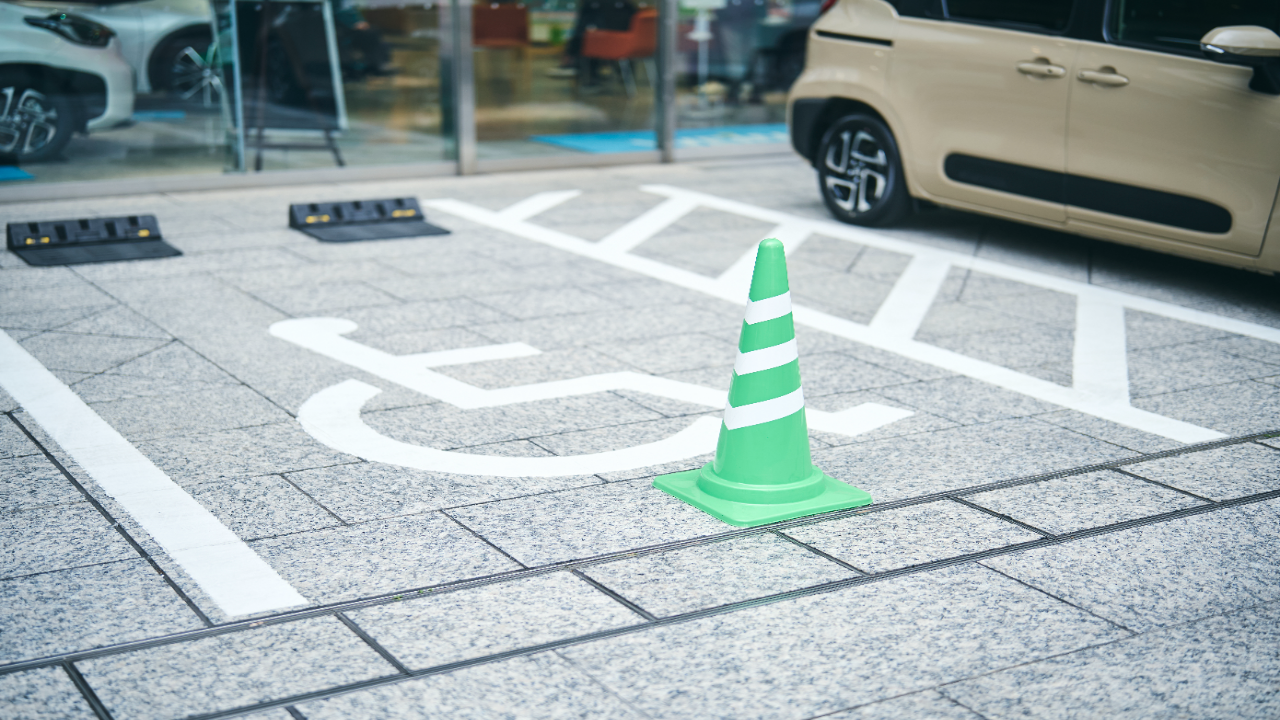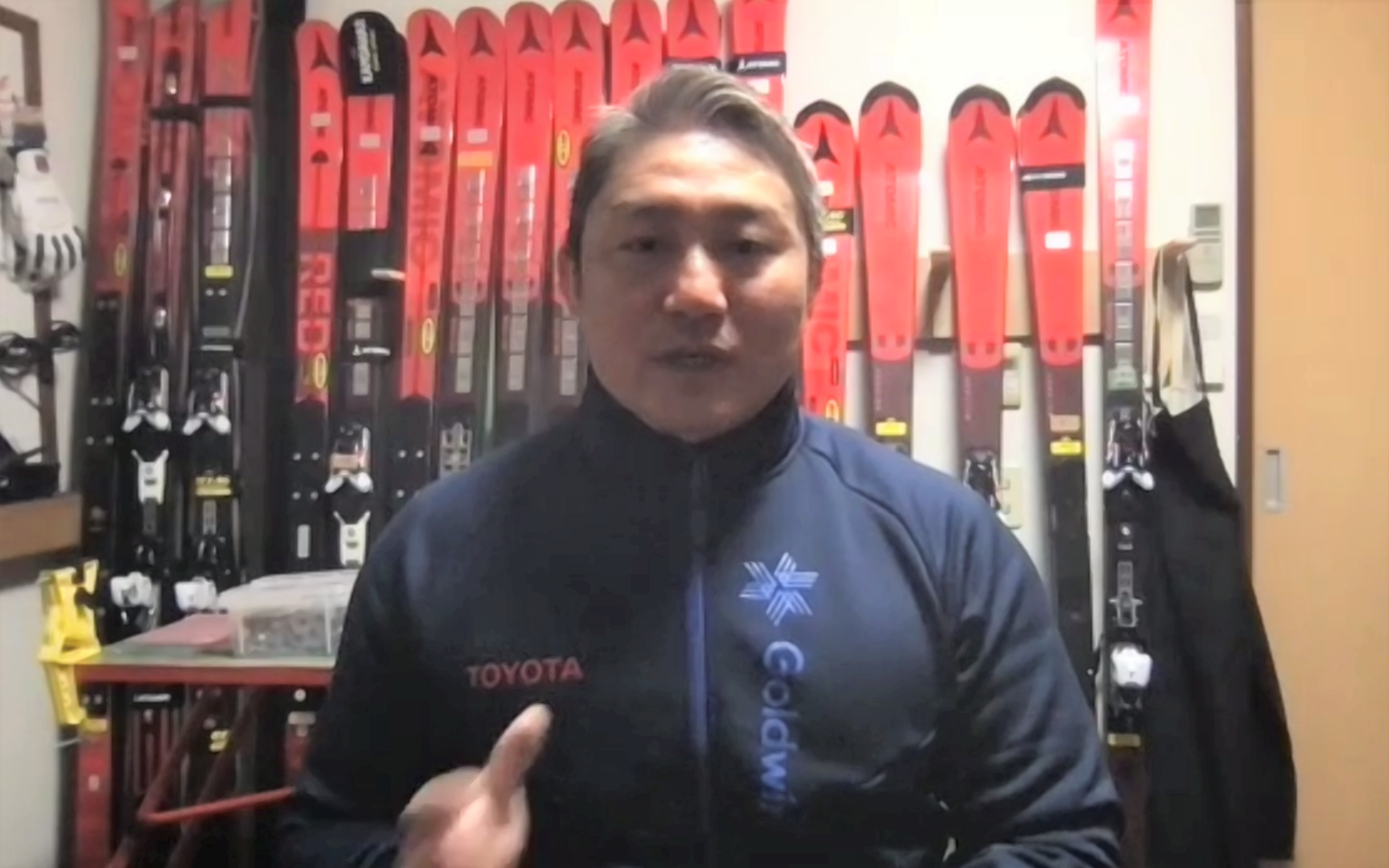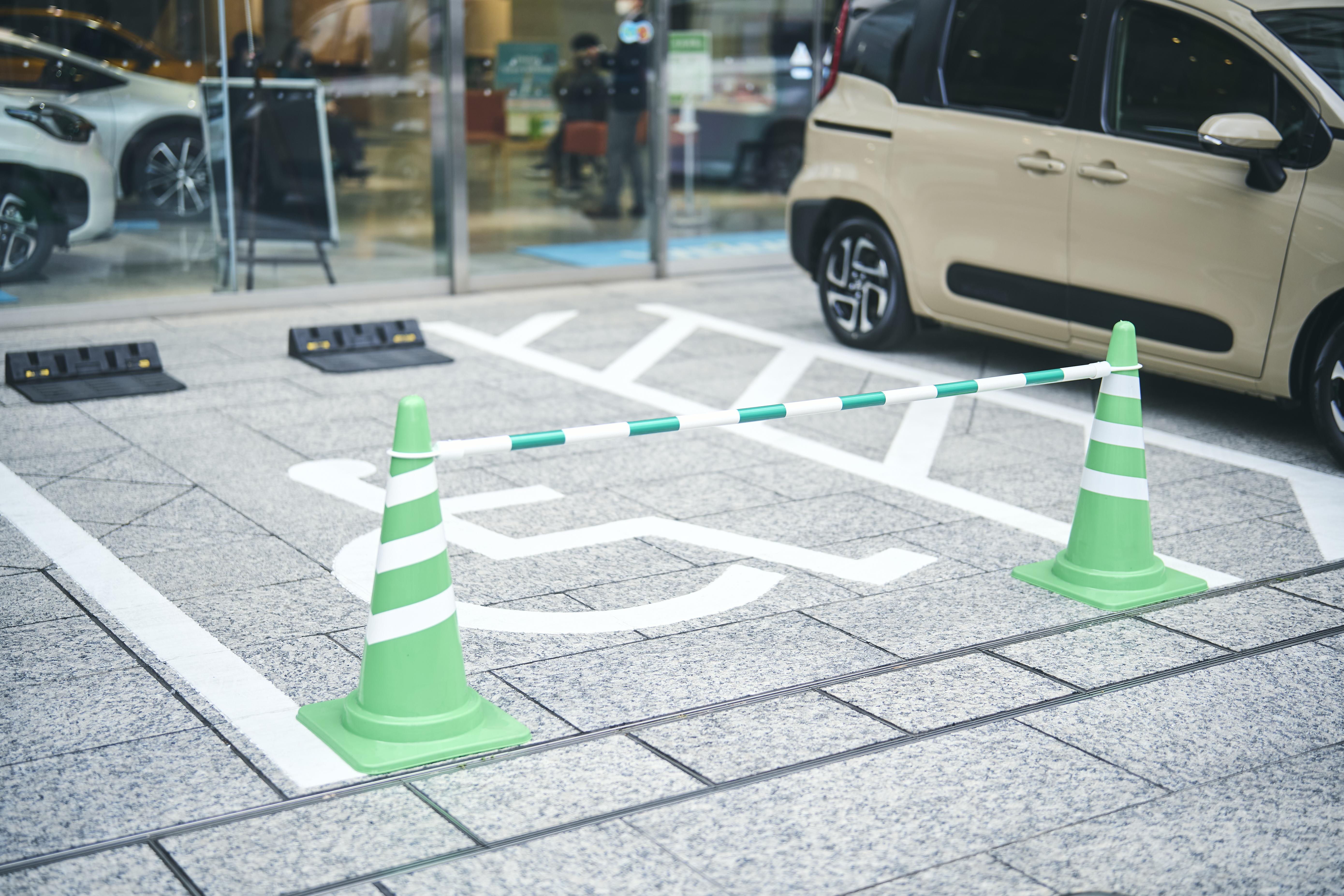
What little-known habit causes trouble for around 90% of wheelchair users? Toyota Times shares some surprise findings.
The trouble with traffic cones
The driver must get out of their car to move the cone before getting in again. This is a lot of effort. What’s more, since moving the cone may block traffic for other cars, many drivers will forgo such parking spots during busy times.
Morii explained how he deals with the situation.
Morii

I have a strong upper body, so I can sometimes pull the car up close to a traffic cone and reach out of the window to move it.
But if the spot is blocked by a bar, there’s nothing I can do.

In places like airports, you can use the intercom from the car window to ask for the barrier to be automatically moved, or for the staff to come, which is very helpful.
Even for athletes who keep their bodies in peak condition, in certain situations there is little that can be done. Toyota Loops employee Masato Yamada explained what it’s like for non-athletes such as himself.
Yamada
Depending on your degree of physical disability, some people would struggle with moving even a single cone. A bar between two cones makes it even tougher.
The five wheelchair users we interviewed, while all deeply appreciative of the thoughtfulness behind using traffic cones to secure parking spaces, also revealed that the gesture actually made things harder.
Exposed to the elements
Another little-known aspect is that each person has their own way of getting from wheelchair to car. The approach, and the time needed, differ according to individual disabilities.
Take, for example, this video of Yamada getting into his car. One key point is the way he loads the wheelchair into the car, rolling it over his legs while sitting in the driver’s seat.
He says that this method is the most basic.
Unfortunately, his clothes are inevitably dirtied by the tires. To avoid this, many people lay a sheet over their bodies, but on rainy or snowy days even that is not enough to avoid being covered in mud. Nakagaki of Toyota Loops explains.
Nakagaki

If it rains, you’re going to get wet (since you can’t move in or out of the wheelchair while holding an umbrella). Anything you grab is going to be slippery, which makes getting into the car even more difficult…
If the road surface is smooth like marble, that too turns slippery. When you’re transferring out of the driver’s seat, the wheelchair wobbles, making it hard to get out safely. For the same reason, transferring can also be difficult if the parking space is on an incline.
In snowy regions, some wheelchair-accessible parking spaces are under cover. Unfortunately, this added convenience also seems to make them more tempting to able-bodied drivers.
Ramps leading from parking lots to facilities can also cause headaches. Often, while the stairs for regular visitors are neatly cleared of snow, the ramps will be found still covered.
What struck us in the course of these interviews was the humility with which everyone spoke. Despite the many difficulties, they all understand that there are limits to what facilities can do.
On the next page, we share a few more interesting videos.

